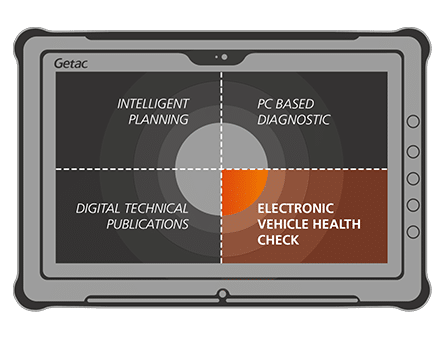Revolutionizing Car Dealership
The automotive industry is experiencing a noticeable disruption, which is seen in how dealerships are run. It is important to recognize the Electronic Vehicle Health Check (EVHC) as essential instead of an option.
The contemporary car dealership environment requires close attention to customers’ needs and requirements for dealership services. An improved EVHC system that focuses on customer satisfaction can achieve all these components.
Evolution of Vehicle Health Check Systems
Technicians physically did preventive maintenance check-ups in vehicles to diagnose problems in various parts of the vehicle. It was tedious work, always highly susceptible to human factor influence, and, in many cases, did not have the degree of openness required to foster customer confidence these days.
The environment has changed now that organizations have implemented digital-based EVHC systems. These systems are employed in an automated and enhanced version of the standard vehicle health check, which provides more precision, productivity, and customer satisfaction. When auto dealerships turn to digital solutions to manage their affairs, this approach is regarded as the standard EVHC system for automotive service departments.
Benefits of the EVHC Systems to Dealerships
1. Enhanced Efficiency
EVHC systems enhance the service flow by reducing the time taken to inspect the cars. This automation minimizes the chances of manual faults and guarantees vigorous scrutiny of all vehicle sections.
The amount of time saved through automated events can be reflected by a technician’s ability to service many cars in a shorter time, which directly impacts the dealership’s efficiency in general.

2. Increased Revenue Opportunities
Another major benefit of having an EVHC system is the possibility of increasing upselling rates. The system produces reports that offer concise descriptions of the analysis done during the inspection, helping service advisors explain problems that need repairs to customers.
This increases customer understanding and, hence, customer approval for additional services as may be necessary. Most dealerships adopting the EVHC systems also state that enhanced revenues are caused by increased upselling potential.
3. Improved Customer Satisfaction
Customer satisfaction is an important parameter that helps the automotive service industry reach its full potential. When customers make payments to the dealerships, they get detailed reports that include illustrations of the problems that were detected, which a layman can easily understand.
This serves as a method of strengthening the trust developed between the customer and the dealerships.
4. Better Data Management
Modern EVHC systems are designed to collect large volumes of data regarding vehicles’ conditions and store this information in one location that can be easily accessed and analyzed.
Through the system’s centralized database, dealerships can easily access the vehicle’s history and recurrent problems, enabling them to offer services that meet clients’ needs. The data also gives insights into how it can be analyzed to develop future services and customer relations.
Understanding the Digital Systems of EVHCs
The digital version of the EVHC systems is developed using sophisticated technology and operates in an integrated manner within the dealership. The process starts when a car arrives at the dealership; the system offers the technicians a step-by-step guide through the inspection. Every inspection step is captured, and any defects captured using pictures or videos are noted.
The system also develops a report that is forwarded to the service advisor, who presents it to the customer. The present version of this report is flexible, so it can be modified to fit any dealership management system. The whole production process of the technical help and the platform is intentionally user-friendly and easily understandable for both the technicians and the customers.

Challenges Faced While Implementing the Use of EVHC Systems
Dealerships might be concerned about where to get the necessary funds to implement an effective and reliable EVHC system. However, in the long run, efficiency is achieved, more revenues are realized, and increased customer satisfaction outweighs the costs. Dealerships should also approach this as an investment that will help them earn returns in the long run.
Other risks that can be present are staff training and adoption. Changing the system also requires all the team members to feel at ease with the new system and accept it for what it is. Practical training and aggressive follow-ups are crucial as the organization transitions. This integration might prove complex due to compatibility problems with the existing DMS that must be integrated with the EVHC system.
Directions for the Development of EVHC Systems
The future of digital EVHC systems is bright, and vehicle health checks are all set to get smarter with the help of Artificial intelligence (AI) and predictive analysis. AI can improve diagnoses and detect faults that may occur in the future, helping the organization reduce the frequency of such faults and thereby improving customer satisfaction.
In addition, as more connected cars are adopted, Electronic Vehicle Health Check systems will be integrated with IoT technology to enable real-time vehicle monitoring. This integration will add another layer of convenience to the customers, especially in getting regular updates on the vehicle’s health.
Shifting Gears Toward a Digital Future
Today, the automotive industry is growing and becoming more saturated, making an effective digital vehicle health check system vital to addressing the growing customer needs and guaranteeing the sustainability of dealerships. Electronic Vehicle Health Check systems are a feasible solution because they increase dealership efficiency, potential revenue, and customer satisfaction.
The time has come for dealerships to experience electronic changes and shift to maintain and adopt an EVHC system. The advantages of having more information are apparent, and it is easy to imagine how to accomplish this. However, for your dealership to continue experiencing growth, it is time to consider upgrading to a higher, more efficient service delivery system.










